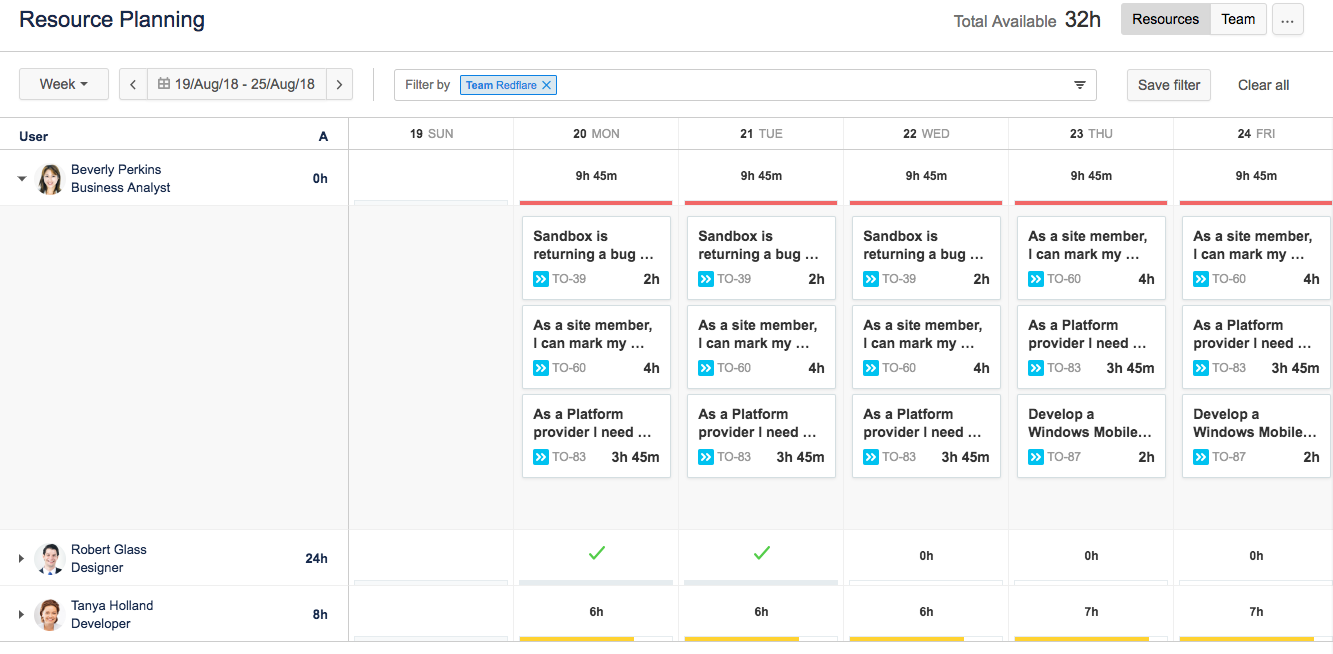In this tutorial, you will create two teams, link projects to them, plan time for members of both teams, and finally monitor the capacity of the shared resources. You need Timesheets by Tempo and Capacity Planner by Tempo to complete these tasks.
Step 1: Creating a new team
The first step is to create your team. Create a new team and name it Redflare. Assign Taylor as the Team Lead.
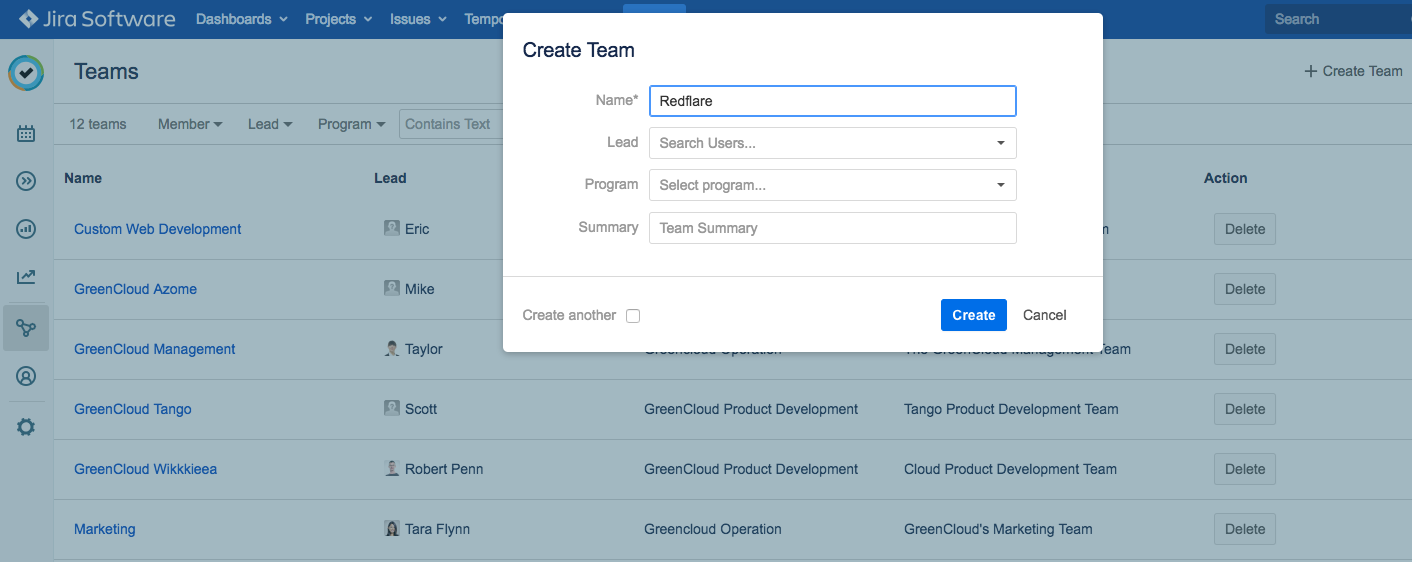
Learn More: Creating and Deleting Teams
Step 2: Adding members to your team
Having created a team, you now need to add team members to it. Add three team members, Robert, Tanya, and Beverly. Allocate the designer role to Robert and as he will be dedicated to this team, set his availability to 100%. Set Robert's joining date to August 6th, 2018.
Add Tanya as a developer and Beverly as a business analyst to the team. As Tanya and Beverly will only work on Redflare part-time, set their availability to 50% with August 1st, 2018 as their joining date.

The system notifies you that the users are participating in other teams 100%. It is nevertheless possible to add them to a new team.
Step 3: Assigning team permissions to team members
Next, you need to grant permissions to team members. By default, the Team Lead - Taylor - has all team permissions and all team members have the permission to view team information. Grant Robert, Tanya, and Beverly the permission to manage team plans.
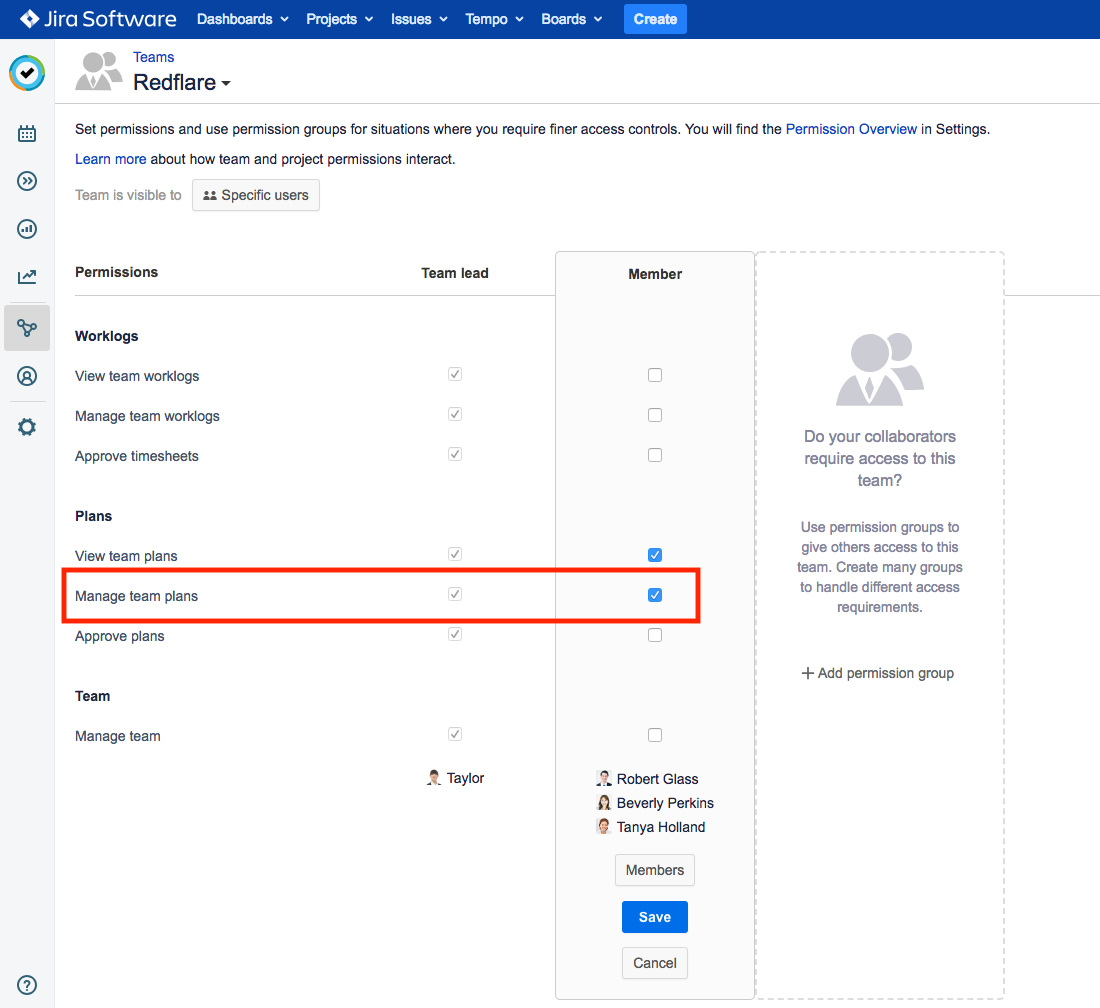
Step 4: Linking projects to your team
The first step in planning your team's time is to link one or more Jira projects to the team so that you can plan time on issues in those projects. When you have linked projects to the team, you can drag and drop issues directly from these projects onto your Team Planning Timeline.
Link the Tango OnDemand project to the Redflare team.
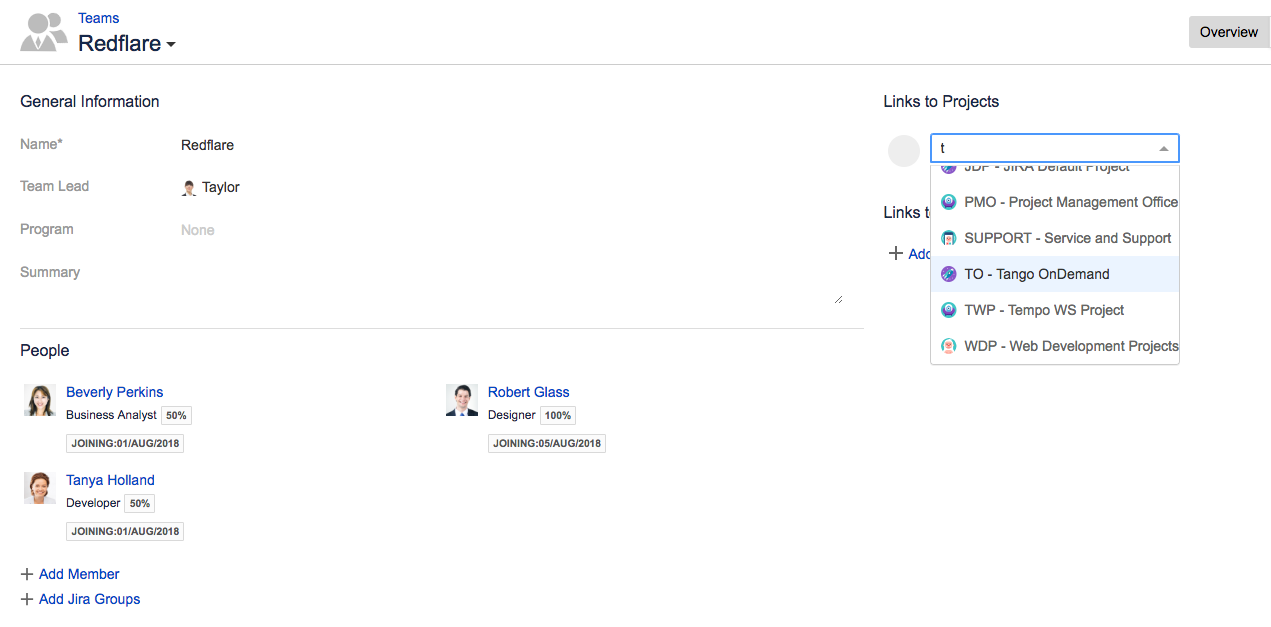
Learn More: Linking Teams to their Jira Projects, Boards and Issues
Step 5: Creating another team
Team Redflare is now ready to go – you have populated it with team members, set their roles, availability, and permissions, and linked the team to the relevant project.
Now do the same for team Yellowjacket. Again, Taylor will be the team lead. Add Tanya and Beverly as team members, set their availability to 50% and their joining date to August 1st, 2018. As for team Redflare, link team Yellowjacket to the Tango OnDemand project.
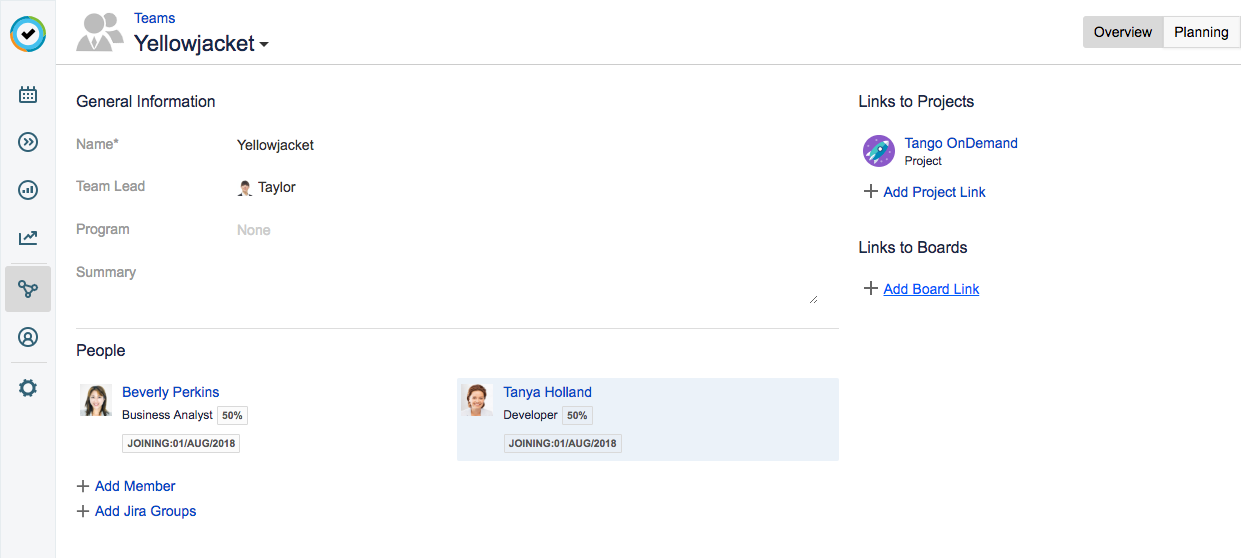
Step 6: Planning time for team Redflare
With both your teams ready, it's time to start planning. In the following steps you will plan time for team Redflare using the Team view. From the suggestions sidebar you can see all of the issues from the project you have linked to this team. Drag issues and drop them on Beverly's timeline in Week 34, 2018.

Learn More: Planning for Your Team Using the Team Timeline
Step 7: Planning time for team Yellowjacket
Now switch teams to team Yellowjacket and plan Beverly's time in week 34, 2018.
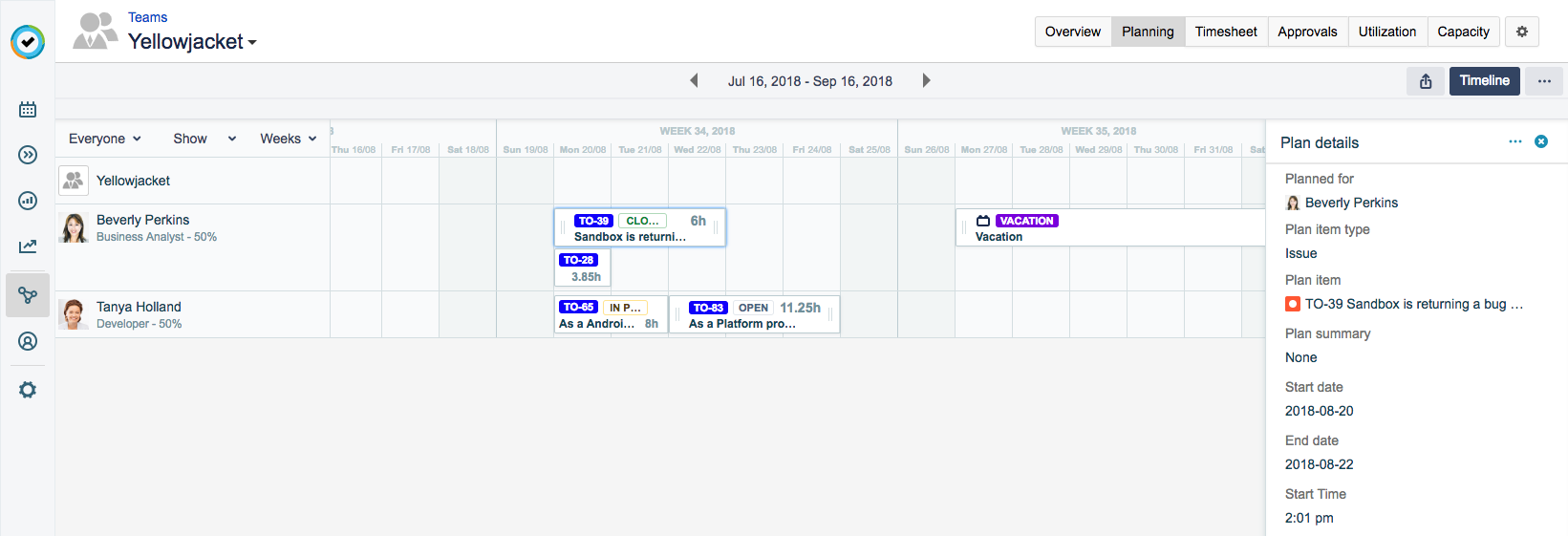
Step 8: Viewing plans from other teams
Now that you have planned time for both your teams, it's a good idea to view the upcoming schedule. If members of your team are also working with other teams, it can be useful to include their plans from those other teams in the Team Planning Timeline.
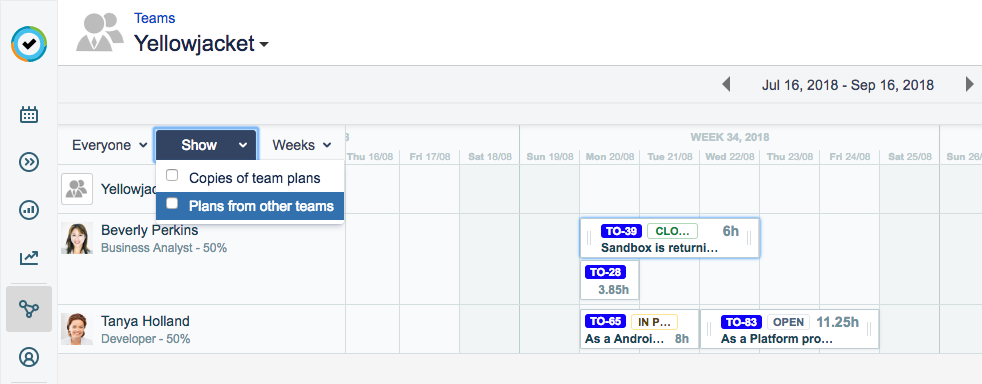
Step 9: Viewing team capacity
Having planned time for members in your team you may want to see the team's capacity. Capacity is a measure of how much time is planned, and how much time is available for each member in your team. In this step you will view the capacity of Redflare team using the Team Capacity Report.

You can see that Beverly is fully committed for week 34 (20 Aug - 27 Aug '18), but Tanya is only at 60%. Nothing has been planned for Robert yet. If you click Time Available you will see that Tanya has 8 hours available for planning whereas Beverly has 0 hours available.
So far you've been viewing the capacity of the team members in the Redflare team, but you can also view the total capacity of the team members. The total capacity includes their planned work for other teams.

Now you can see that Beverly is actually over-committed for Week 34 because she's also working for team Yellowjacket. The time for over-committed team members shows up in yellow.
Step 10: Viewing capacity and plans using resource planning
You can also view the capacity and commitment of your teams using the Resource Planning view. The Resource Planning view provides an overview of your resources so that you can see at a glance who’s available and who’s overbooked.
Learn More: Viewing and Navigating the Resource Planning View

Use the Filter by dropdown to select your teams, Redflare and Yellowjacket, and browse to the of August 20 - 27 (Week 34). You can immediately see that Beverly is over-committed for this week as indicated by a red bar. Tanya is only committed for 6 or 7 hours per day that week so the yellow progress bar indicates the relative amount of planned hours. Robert is fully committed on Monday and Tuesday of this week so he has a green check-mark for those days.
Click the little arrow to the left of Beverly's name to view her plans in more detail. Now you can see exactly which plans Beverly has scheduled and how she is over-committed.
